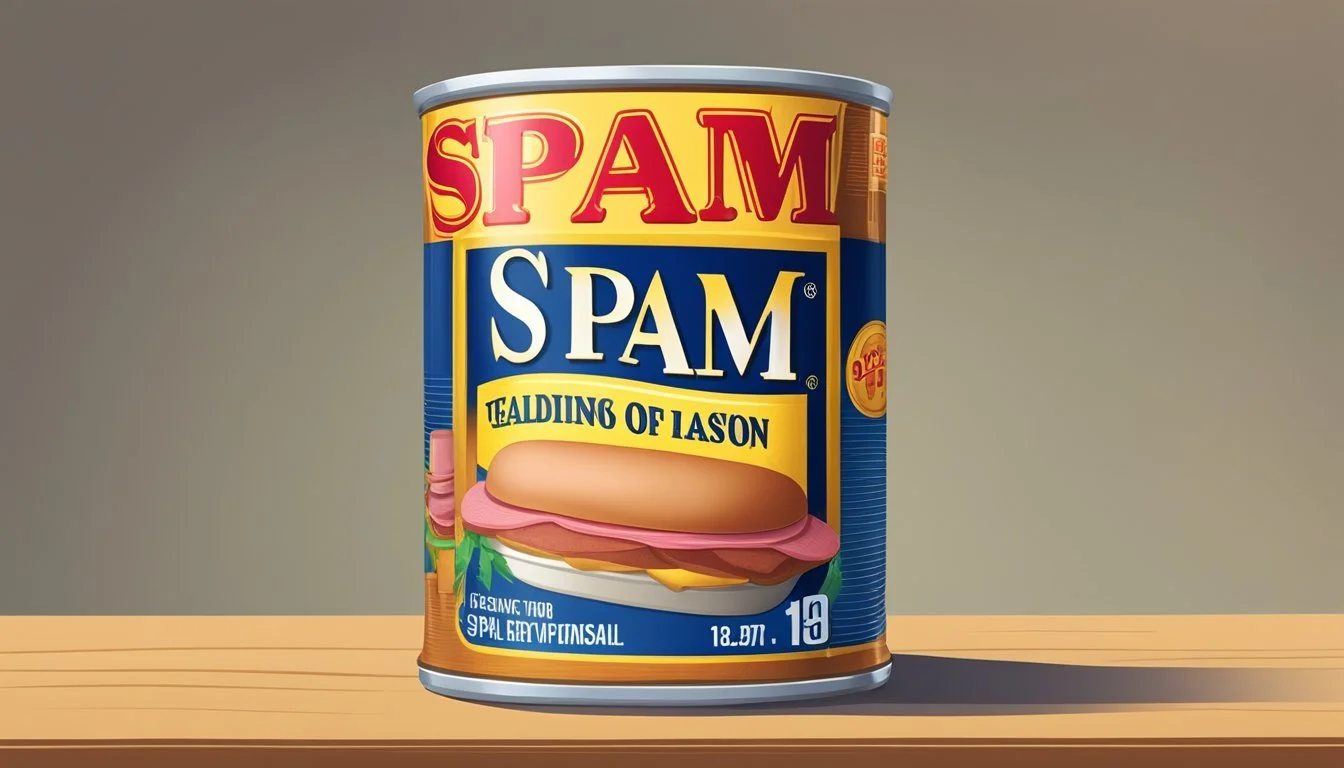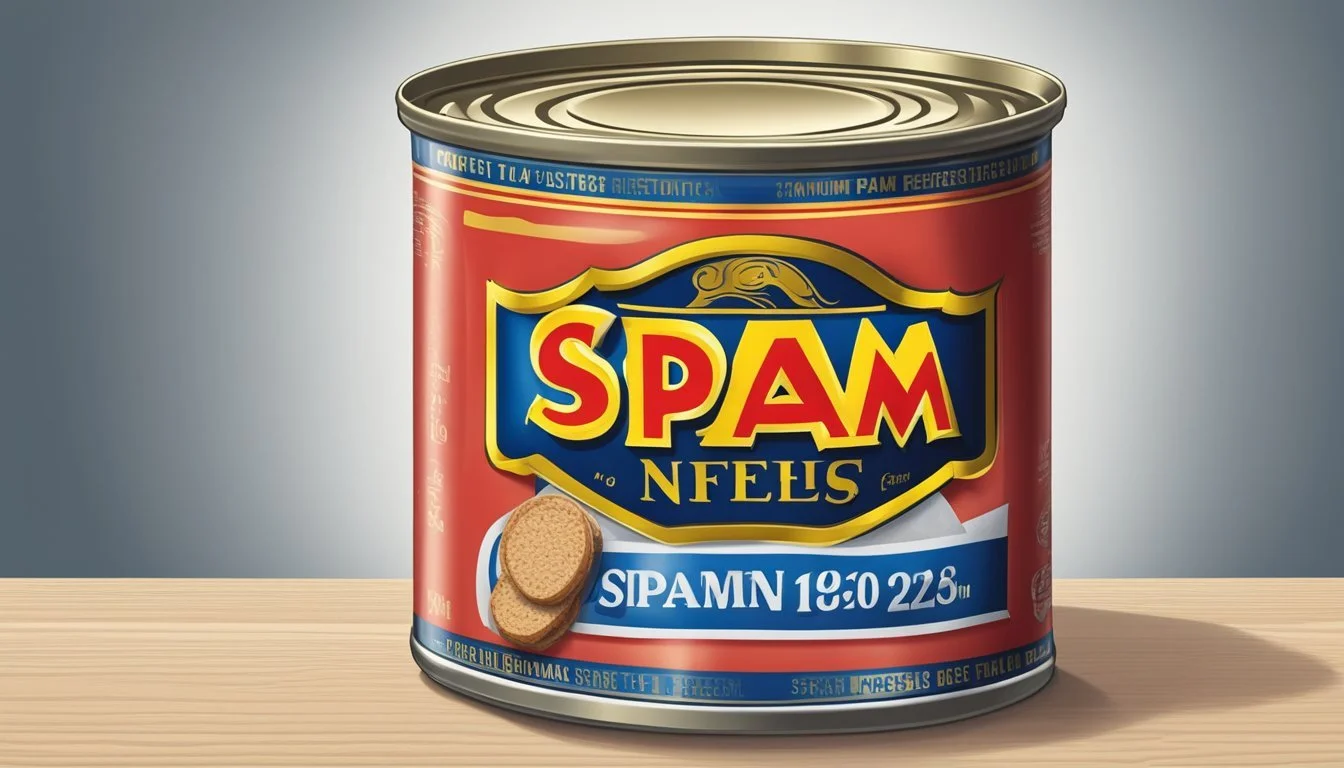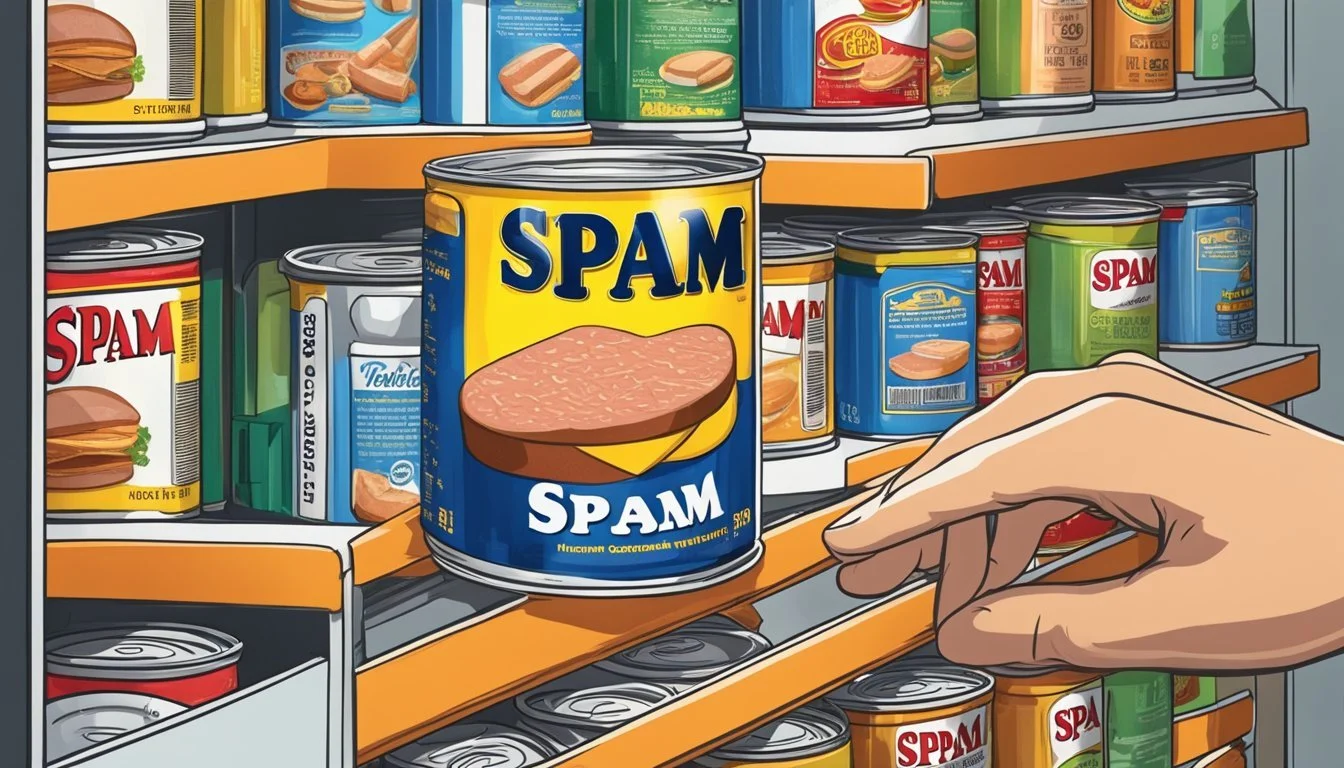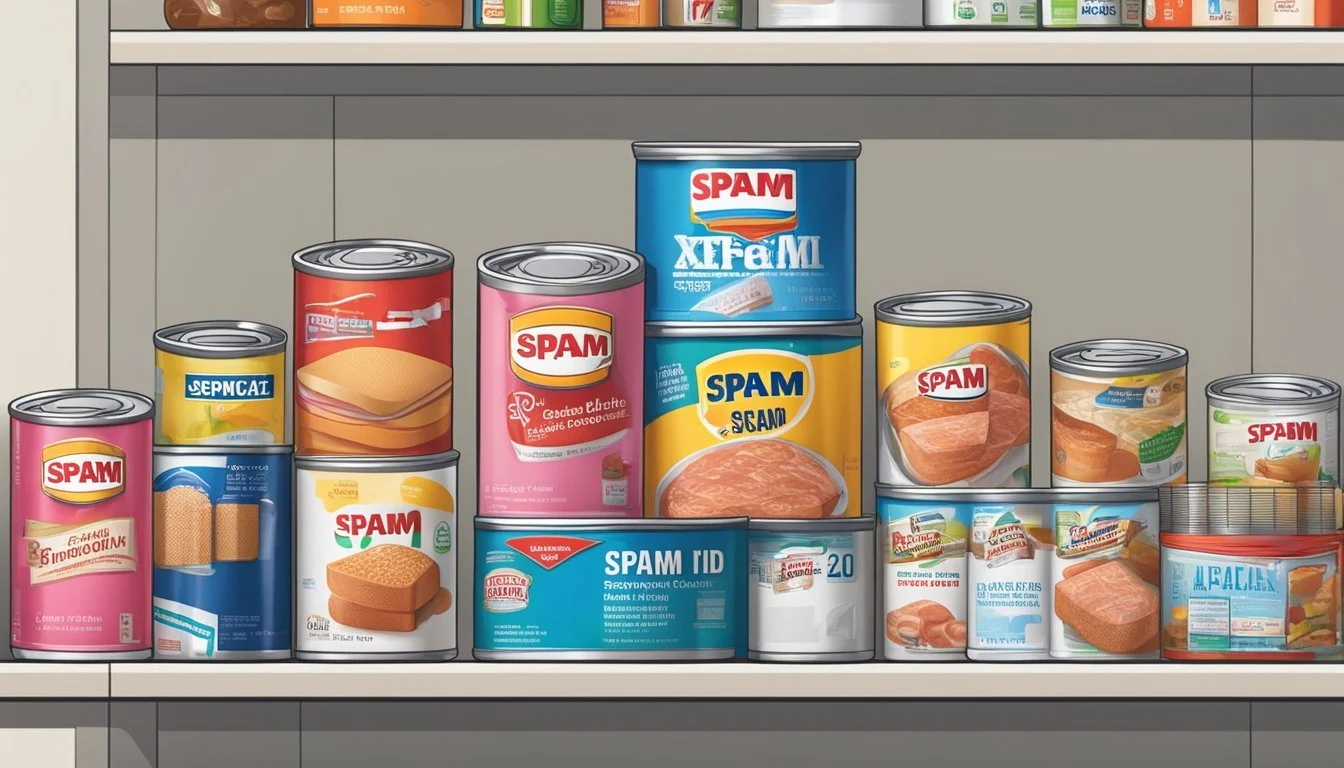How Long Does Spam Last?
Shelf Life and Storage Insights
Spam, a widely recognized brand of canned meat, is valued for its versatility and long shelf life, making it a staple in many households and emergency food supplies. As a preserved meat product, Spam owes its extended shelf life to the canning process and the addition of preservatives, which help to maintain its quality over time. Generally, an unopened can of Spam can remain edible for several years, with a typical best-by date set for about three years after the manufacturing date.
However, the quality of Spam, like any other food product, may start to decline after the best-by date, even though it remains safe to consume as long as the can is not damaged and has been stored properly. Once opened, Spam should be transferred to the refrigerator if not consumed immediately. In refrigerated conditions, Spam retains its quality for a shorter period, ranging from seven to ten days, ensuring that it remains both tasty and safe to eat within this timeframe.
Understanding Spam
Spam, a canned meat product, has established itself as a reliable shelf-stable food item. This section will delve into the ingredients used in the production of Spam and its nutritional content, providing clarity on what consumers are ingesting when they choose this product.
Ingredients and Production
Spam is primarily made from a blend of pork, ham, salt, water, potato starch, sugar, and sodium nitrite. The latter acts as a preservative, giving the product a long shelf life.
Pork and Ham: The main meats used, both pork and ham come from the shoulder of pigs.
Salt: It serves not only as a flavor enhancer but also as a preservative that inhibits the growth of bacteria.
Sugar: Added for taste, it also helps in the curing process.
Water: It provides necessary moisture within the product.
Potato Starch: Used to bind the ingredients together and manage moisture.
Sodium Nitrite: This preservative is crucial for preventing spoilage and maintaining the meat’s pink hue.
The manufacturing process is carefully controlled by Hormel Foods, the company behind Spam, ensuring consistent quality and safety of the product. The manufacturing date on the package is a key indicator of when the Spam was produced and is essential for tracking its shelf life.
Nutritional Content
Spam offers a source of protein and fat, with varying levels of sodium. It isn't typically recognized for widespread nutritional benefits due to its high sodium and fat content, but it does provide a quick source of protein. Here's a breakdown of the general nutritional content found in a serving of Spam (56g):
Nutrient Amount Calories 174 kcal Total Fat 15 g Saturated Fat 6 g Cholesterol 40 mg Sodium 790 mg Total Carbohydrates 2 g Dietary Fiber 0 g Sugars < 1 g Protein 7 g
It's important to note that the nutritional value can vary slightly between different varieties of Spam. Consumers may opt for lower sodium versions if they are concerned about sodium intake. Despite these variations, protein remains a consistent and significant component of Spam's nutritional profile.
Expiration and Shelf Life
When considering the longevity of Spam, the key points to focus on are the expiration date provided by the manufacturer and the actual shelf life based on storage conditions.
Understanding Expiration Dates
The expiration date, often referred to as the best-by date, is typically printed on the can of Spam and is about three years from the manufacturing date. It is important to note that this date is an indicator of the product's peak quality as determined by the manufacturer and not necessarily the safety threshold. The shelf life of Spam, the period during which the product is considered optimal for consumption, may extend beyond the best-by date, provided the can remains unopened and intact.
Determining Spoilage
Even though Spam can last past its expiration date, certain signs of spoilage help determine if it has gone bad:
Visual Changes: Look for discoloration, mold, or any unusual appearances.
Texture: If the texture is slimy or excessively soft, it indicates spoilage.
Odor: An off or rancid smell is a clear warning sign.
Can Integrity: Dents, rust, swelling, or leakage in the can are all signs that the Spam may not be safe to consume.
If any of these indicators are present, it is safer to discard the Spam as it may have suffered spoilage, irrespective of the best-by date.
Storage Recommendations
When storing Spam, temperature control and protection from air and moisture are paramount to maintaining its quality and extending its shelf life.
Optimal Storage Conditions
Spam, being a canned product, should be stored in a cool, dark place to prevent degradation. Unopened cans of Spam fare best at a steady temperature ranging from 50°F to 70°F (10°C to 21°C). Storing Spam in a pantry or cupboard away from heat sources fulfills these conditions. An unopened can will generally last between 2 to 5 years. Once opened, it should always be transferred to a sealed, airtight container and placed in the refrigerator, where it can last 7 to 10 days.
Storage Location Condition Duration Pantry Cool, dark, and dry 2-5 years (unopened) Refrigerator In an airtight container after opening 7-10 days (opened)
Extended Storage Techniques
If longer storage is necessary, Spam can be frozen, although this is less common due to its long shelf life. To freeze Spam, it should be removed from its original can, sliced or kept whole, wrapped securely to prevent freezer burn, and placed in an airtight container or heavy-duty freezer bag. Freezing can greatly extend Spam's shelf life while retaining most of its taste and texture when properly thawed in the refrigerator before use. Other long-term protein storage options like dry beans, textured vegetable protein (TVP), or freeze-dried meat typically require similar cool, dark, and dry conditions, benefiting from the same optimal storage practices as Spam.
Extended Technique Condition Freezing Airtight container, cool freezer
It's important to note that while freezing can extend storage time, the canning process itself is designed to make Spam a shelf-stable product that does not require refrigeration until opened.
Usage and Consumption
When cooking with Spam, the focus is on preserving its distinctive taste and texture, whether it’s used in a breakfast scramble or transformed into Spam musubi for lunch. Safe handling ensures that the preserved meat remains a flavorful and textured addition to various meals without risking food poisoning.
Cooking with Spam
Spam's unique flavor and texture make it a versatile ingredient in the kitchen. It can be enjoyed straight from the can or incorporated into a myriad of recipes. For breakfast, Spam can be diced and fried until crispy, then mixed with eggs or nestled between slices of bread for a hearty sandwich. Lunch might feature Spam musubi, a popular Hawaiian snack where a slice of grilled Spam is placed atop a block of rice and wrapped in nori. During dinner, Spam serves as a substantial protein, complementing dishes like fried rice and macaroni and cheese.
Popular Spam Recipes:
Spam Fried Rice
Spam-and-Cheese Sandwiches
Spam Musubi
Spam Hash
Texture and Preparation:
Slice Thickness: Thin for crisping, thick for grilling
Cooking Methods: Frying, grilling, baking
Texture Transformations: Crispy edges when fried; tender when baked
Safety Precautions
Proper storage and handling of Spam are paramount to prevent food spoilage and foodborne illnesses, such as botulism, which is rare but can occur in improperly stored canned foods. An opened can of Spam should be consumed within seven to ten days when refrigerated, and leftovers should be stored in airtight containers to maintain flavor and prevent contamination.
Spam Storage Guidelines:
Unopened Cans: Cool, dry place; 2-5 years shelf life
Opened Cans: Refrigerate promptly in an airtight container; consume within 7-10 days
Signs of Spoilage:
Odor: Off-smelling indicates potential spoilage
Texture: Sliminess can suggest bacterial growth
Color: Any discoloration can be a warning sign
By adhering to these guidelines, consumers can enjoy the distinctive taste of Spam across various meals safely.
Spam Varieties
Spam, a popular canned meat product, comes in various forms and is comparable to other types of canned foods in terms of versatility and shelf life.
Different Forms of Spam
Spam has evolved from its original classic flavor to a range of flavors catering to diverse tastes. These include selections such as Spam Lite, which offers fewer calories and less fat compared to the standard version. Here are some of the common varieties one might encounter:
Classic: The original and most widely recognized form.
Spam Lite: A lower-fat, lower-calorie alternative.
Hickory Smoke: Infused with a smoky taste.
Garlic: For a more robust flavor profile.
Hot & Spicy: With a kick of heat for those who prefer a bit of spice.
Bacon: Combines the taste of Spam with the smoky flavor of bacon.
Teriyaki: A nod to Asian-inspired flavors.
Each variety maintains the core qualities of Spam as a versatile processed meat, often used similarly to sausages and other luncheon meats in a range of recipes.
Comparison with Other Canned Foods
When comparing Spam to other canned foods, one notes that it is a type of luncheon meat, akin to sausages in its processed form. However, Spam distinguishes itself in its innate versatility, being amenable to various culinary applications – from slices to dices, it can be prepared in multiple ways. Below is a comparison table highlighting key attributes when juxtaposed with other similar canned goods:
Feature Spam Varieties Other Canned Foods Type Processed meat Varied (vegetables, fruits, fish, etc.) Shelf Life Up to 5 years unopened 1-5 years typically Preparation Ready to eat or fry Ready to eat or cook further Caloric Content Variable (e.g., Spam Lite is lower) Variable Popular Use Sandwiches, breakfasts, recipes Side dishes, meals, recipes Storage After Opening Refrigerated, up to 7-10 days Refrigerated, duration varies
It is clear that Spam's diversity and longevity make it a staple, providing a hearty option for meals that require the convenience and durability of canned foods.
Spam’s Role in Emergency Preparedness
Spam has become a trusted staple in emergency food supplies due to its longevity and the ease of storage. Its role in disaster readiness is significant for those seeking reliable nutrition options.
Longevity and Reliability
Spam's longevity underpins its value for emergency preparedness. A canned meat product with origins tracing back to 1937, it has established a reputation for durability in storage. Spam typically comes with a "best by" date approximately three years from its manufacturing date, offering consumers an extended window for consumption. The preservation process utilizes sodium nitrite, which plays a crucial role in maintaining the product's safety past this date, although some sensory qualities such as taste and texture might change.
Storage Tips for Spam:
Keep in a cool, dry place away from extreme temperatures.
Ensure the can is undamaged to prevent potential food safety issues.
Rotate stock based on "best by" dates to maintain the freshest emergency food supply.
Strategic Stockpiling
For preppers and those keen on disaster readiness, Spam is a viable option for strategic stockpiling. Its combination of proteins and fats makes it a dense source of calories essential for survival situations. The ease of Spam storage is a key advantage; it requires no refrigeration and takes up minimal space, making it ideal for compact and efficient emergency food reserves.
When stockpiling Spam for emergencies, quantity and variety are considerations. Incorporating various flavors can reduce palate fatigue, thus preserving morale during extended periods of reliance on emergency provisions. Regularly reviewing and managing the stock to ensure a rotation that respects the "best by" dates is essential for a practical and sensible preparedness approach.






